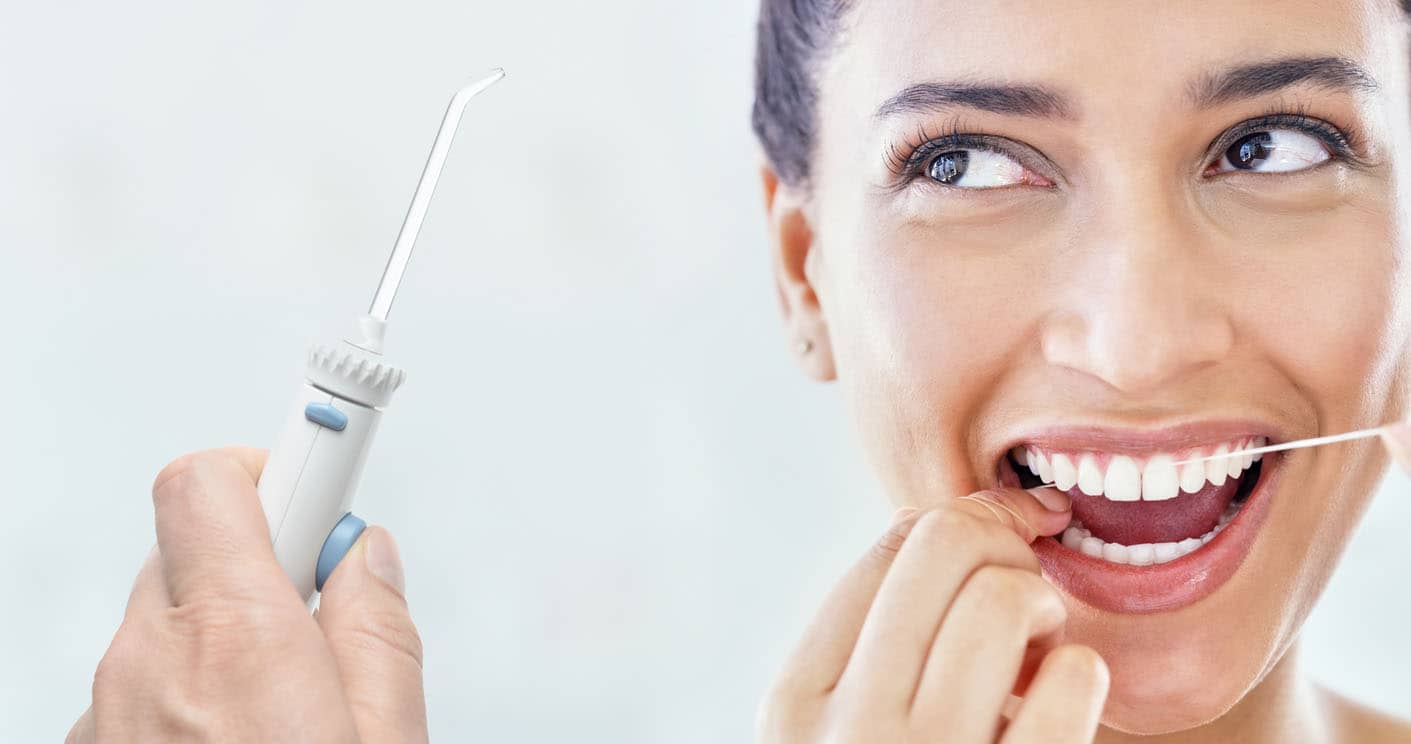Many people find flossing to be an unpleasant task. The Waterpik, which uses a powerful stream of water to clean between teeth, has helped many people clean out the tough-to-reach spaces between their teeth. Others prefer regular dental floss. But which is better? Let’s take a look at a Waterpik vs dental floss.
Waterpik vs Dental Floss: Which is Better?
The numbers vary somewhat, but estimates suggest that about 30 to 40% of Americans floss daily, and about 60 to 70% floss at least once a week. At least 20% never floss. Flossing regularly helps protect your teeth and gums, and prevent tooth decay and periodontal disease. But is a Waterpik as good as dental floss? Or maybe even better?

Waterpik vs Dental Floss: Which Works Better?
A Waterpik is a brand name for a water flosser or oral irrigator. It uses a high-pressure, pulsating stream of water in order to remove food particles and plaque. The American Dental Association has given Waterpiks a seal of approval, finding the products to be “safe and shown efficacy for removing plaque along the gumline and between teeth, and helping to prevent or reduce gingivitis.” However, this does not necessarily mean that Waterpiks or other water flossers work better than dental floss.
According to the Mayo Clinic, regular dental floss is still considered to be the most effective tool in fighting plaque and bacteria building up between teeth. Waterpiks should not be considered a substitute for regular dental floss. However, if regular dental floss is uncomfortable to use, or it becomes stuck between your teeth, a Waterpik can help you reach the most difficult spots.
So, when comparing which works better between a Waterpik vs dental floss, dental floss is probably still a better choice.
Waterpik vs Dental Floss: Which is Easier?
For many, a Waterpik may be easier to use than dental floss. With a Waterpik, you can simply hold the handle and point the end towards your teeth and gums. With a gentle spray, you can clean between your teeth and around your gums. This can be especially helpful if you have braces, which can make flossing difficult.
Some may find that it’s difficult to reach their back molars with dental floss. Those who don’t floss regularly may find flossing painful, and a water flosser may be easier to use. Or, those without strong motor control may also find a Waterpik easier to use.
In general, most users consider water flossers to be easier and more pleasant to use. There’s no need to wind floss around your fingers, the string won’t get caught between tight spaces, and Waterpiks aren’t painful like flossing sometimes can be.
Waterpik vs Dental Floss: Which is Better for You?
When deciding between a Waterpik vs dental floss, the answer of which is better isn’t quite so definitive. A more accurate question might be which is better for you.
If you’re comfortable using dental floss and you don’t find it unpleasant, dental floss is the better choice. However, if a Waterpik helps you clean the spaces between your teeth more often, use it! As long as you’re cleaning the spaces between your gums and teeth, there’s really no wrong answer.
If you’re more comfortable using a water flosser, consider keeping some floss on hand for a deep clean once a week. Or, if you don’t like flossing, consider trying a Waterpik or another water flosser. Cleaning your gums can help to prevent gum disease and keep your mouth healthy long-term.
Start a Flossing Habit
While daily flossing is the best way to protect your teeth and gums, any amount of flossing is better than none. Challenge yourself to floss at least once a week, or use a water flosser at least once a week. Consider making this a part of a routine to take a bit of extra time for yourself. Coupling an unpleasant task with a pleasant one, like taking a bubble bath or a long, hot shower, will help making flossing seem less like a chore. Remember that taking a few extra minutes to floss is an important part of treating yourself. By taking this time, you’re investing in your oral health long-term, and protecting your teeth and gums.
